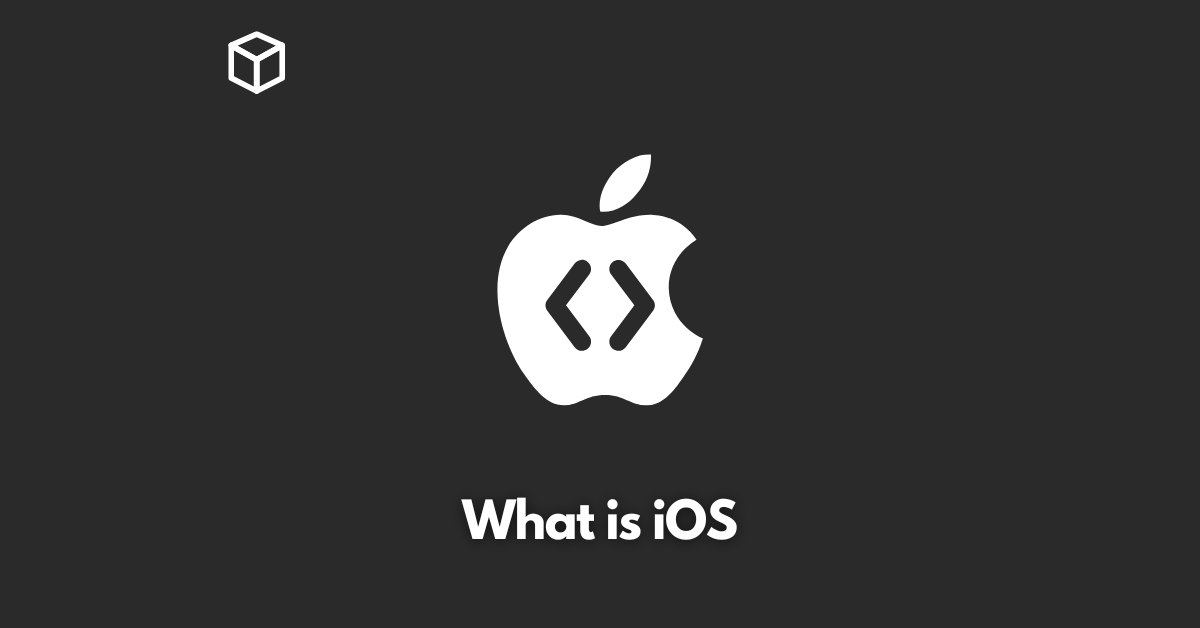iOS, developed by Apple Inc, is a mobile operating system that powers iPhones, iPads, and other Apple devices.
It is considered as one of the most advanced and user-friendly mobile operating systems in the world.
With its intuitive design, seamless integration with other Apple products, and a wide range of features, iOS has become an essential part of the technology industry.
In this article, we will delve into the history of iOS, its architecture, development, features, and capabilities, and explore its continued impact on the technology industry.
History of iOS
iOS has come a long way since its initial release as iPhone OS in 2007.
It was exclusively designed for the iPhone and was later renamed to iOS in 2010 with the release of the iPad.
Over the years, Apple has made several updates to the operating system, introducing new features and capabilities, and improving its overall performance.
Some of the key milestones in the history of iOS include the introduction of the App Store in 2008, which allowed users to download and install third-party apps on their devices.
The launch of Siri in 2011, which revolutionized the way we interact with our devices.
The introduction of the Touch ID and Face ID in 2013 and 2017 respectively, which improved the security of iOS devices.
iOS Architecture
iOS is built on a layered architecture, consisting of the Core OS layer, Core Services layer, Media layer, and Cocoa Touch layer.
The Core OS layer, also known as the kernel, is responsible for managing the device’s hardware resources and provides basic services such as memory management and file system access.
The Core Services layer provides essential services such as networking, location, and data storage.
The Media layer handles all the audio and video playback and recording, and the Cocoa Touch layer, the topmost layer, provides the user interface and user experience.
The layers work together seamlessly to provide a smooth and responsive user experience.
iOS Development
iOS developers use Xcode, Apple’s Integrated Development Environment (IDE), to build and test their apps.
Xcode provides a wide range of tools and resources that developers can use to create apps that are compatible with iOS.
Swift, a powerful and intuitive programming language developed by Apple, is used for iOS development.
While developing for iOS has its advantages, such as the ability to access a wide range of features and capabilities, it also has its downsides, such as the need to comply with strict app store guidelines.
iOS Features and Capabilities
iOS offers a wide range of features and capabilities that make it stand out from other mobile operating systems.
Siri, a virtual assistant, allows users to interact with their devices using voice commands. iMessage, a messaging service, enables users to send and receive messages, photos, and videos.
AirDrop, a file-sharing feature, allows users to share files with other iOS devices wirelessly.
These features and capabilities, along with others like Touch ID and Face ID, not only improve the user experience but also integrate seamlessly with other Apple products and services.
Conclusion
iOS has come a long way since its initial release as iPhone OS in 2007.
With its intuitive design, seamless integration with other Apple products, and a wide range of features, iOS has become an essential part of the technology industry.
While developing for iOS has its advantages, such as the ability to access a wide range of features and capabilities, it also has its downsides, such as the need to comply with strict app store guidelines.
With the ongoing advancements in technology, we can expect iOS to continue to evolve and improve, and the future of iOS looks promising.




